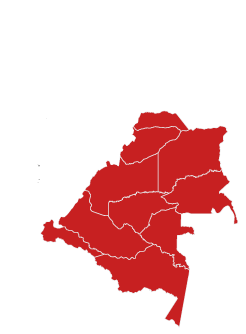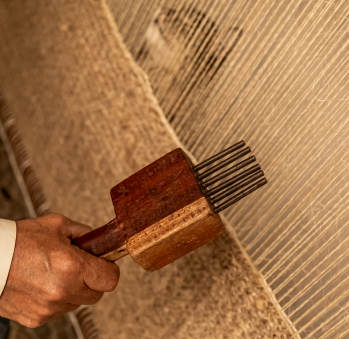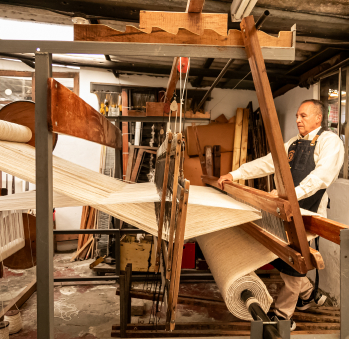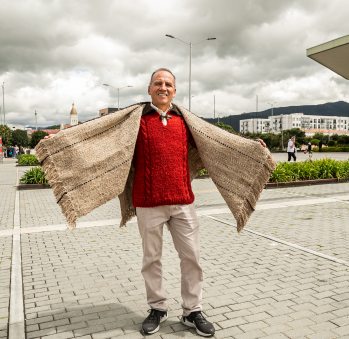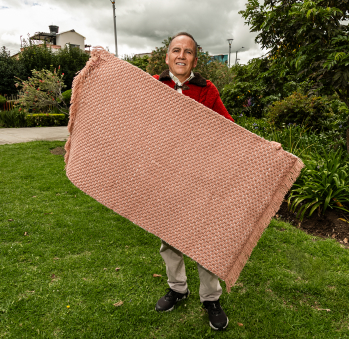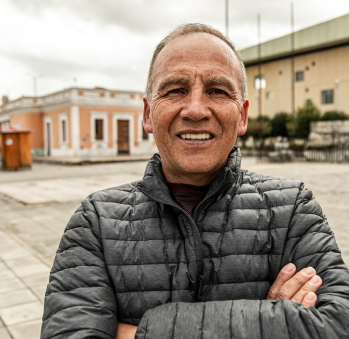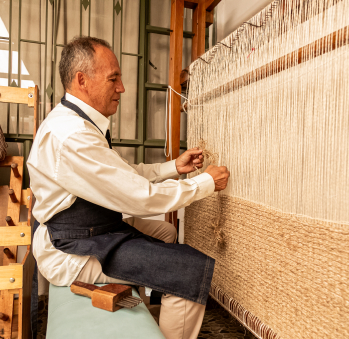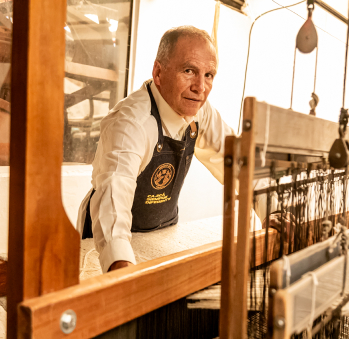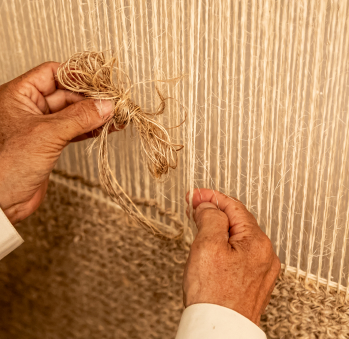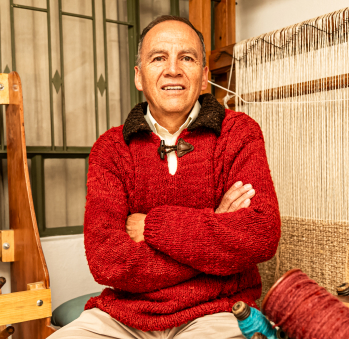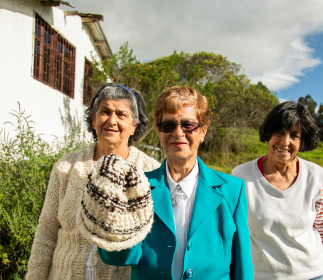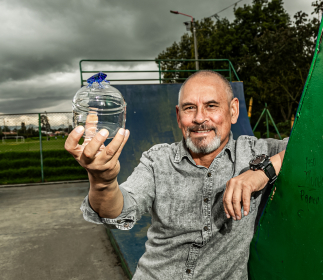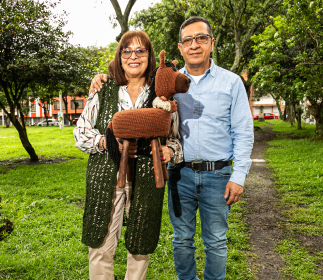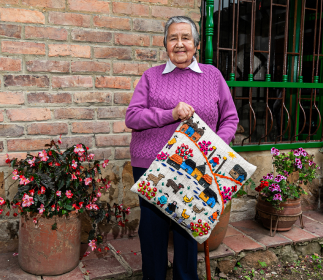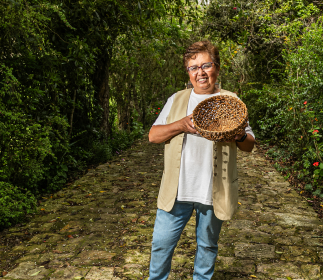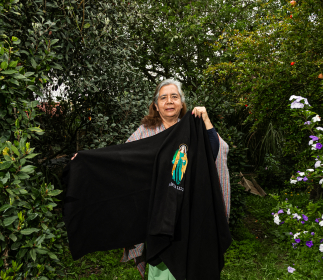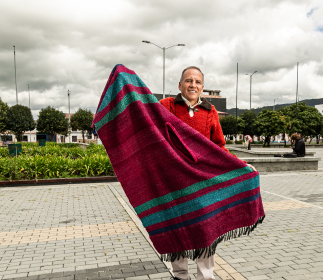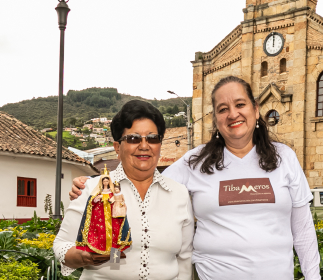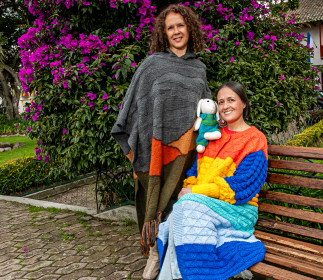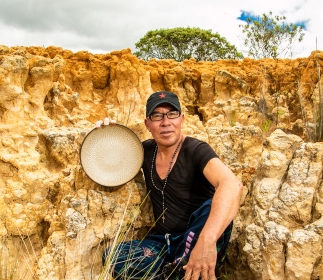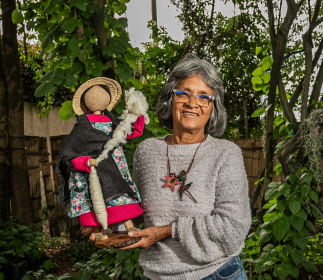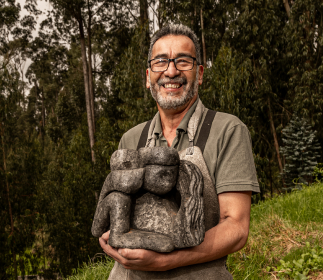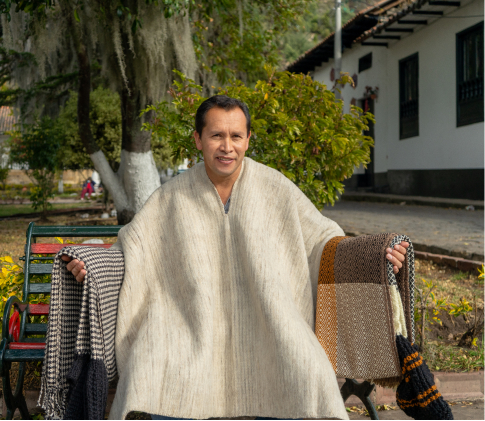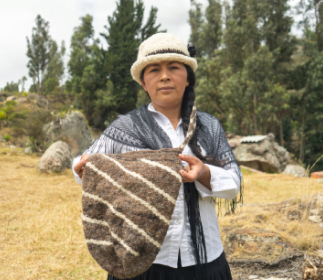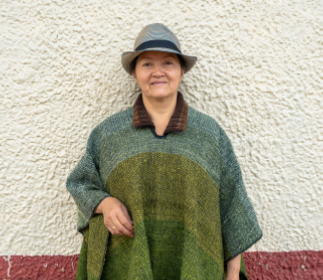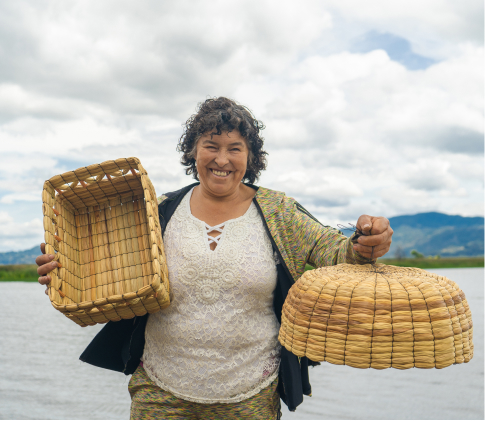Pedro Manuel Sánchez
Workshop: Tejidos Victoria
Craft: Weaving
Trail: Cundinamarca Route
Location: Cajicá, Cundinamarca
Pedro Manuel’s love for weaving came to him through tradition and curiosity. He smiles as he recalls how he used to climb onto his father’s looms, play around on them, and watch his father work until Don Manuel realized the boy’s interest was genuine. That’s when he taught him to wind the wool, dye it, and weave. Thinking back, it’s no surprise he got tangled up in wool—his maternal grandfather used to sell sheep in Chocontá, so wool has been a part of his life from the start.
He works in Cajicá, where he lives. However, he explains that the tradition of weaving rugs—a craft for which the town has been known for decades—came from Bogotá. The first workshops to excel in this craft were Artelana and Madelana, founded by a German and a Jewish family respectively. He mentions this because his father worked at Artelana, where the founder, a man who had been a prisoner and escaped from Germany during the war, taught him everything about operating a horizontal loom. He spent several years there until he responded to a classified ad seeking skilled weavers willing to move to the Bogotá savanna to work at a new factory called LAV, named after its founder, Leonidas Arciniegas Vanegas. It was the late 1950s, and with no family commitments or ties to the capital, he moved to take on this opportunity.
It turned out to be a jackpot, as Cajicá soon became known as a cradle of weavers and a prime location for the tapestry industry to flourish. Pedro Manuel recalls witnessing the birth of around thirty factories as he grew up, each distinguishing itself with manual looms, turning this industry into the second largest economy in his municipality. It was here that he established his career.
Before striking out on his own, he worked in various places, including a furniture factory that needed fabrics for upholstery and another where a horizontal loom weaver was required, both in Cajicá. After completing his military service, he moved to San Cristóbal, Venezuela, during the times of Carlos Andrés Pérez, when money flowed freely and he had the chance to meet the “elite of manual weavers” from across the continent. There, besides exchanging knowledge and continuing to learn, he met Sandra, his wife, whom he later taught how to weave.
Back in his homeland, he specialized in crafting knotted rugs on a vertical loom, making them round and oval-shaped, a modern twist on traditional styles. It was the 1990s when he teamed up with Rosa María Moyano, who had recently left the renowned Tapetes LAV factory. They had met at the furniture factory and knew each other’s skill, so they joined forces to found Anudados Tapitex. Years later, he added his own family brand to the business, naming it Tejidos Victoria in honor of his youngest daughter.
Today, his wool and cotton rugs, so finely woven they can be displayed on either side, have reached the exclusive market of New York and have been a part of collaborations with interior designers. Yet, he remains devoted to simplicity and adaptability. When sales slow down, he weaves virgin wool ruanas. And during those times, like a true lover of his craft, he delves into researching innovations—exploring new materials to combine with wool—continuing to weave the warp and weft, which is nothing less than the fabric of his life.
Craft
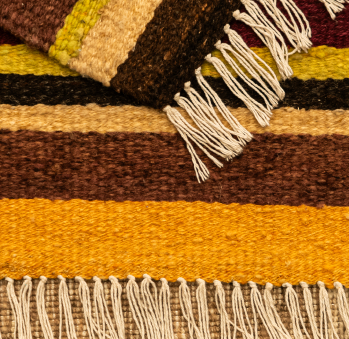
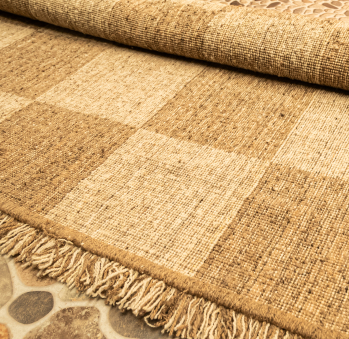
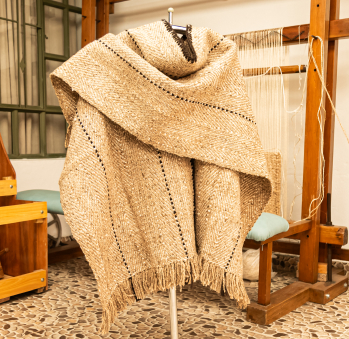
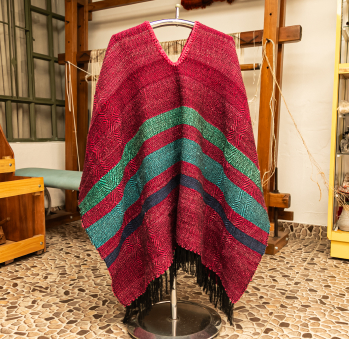
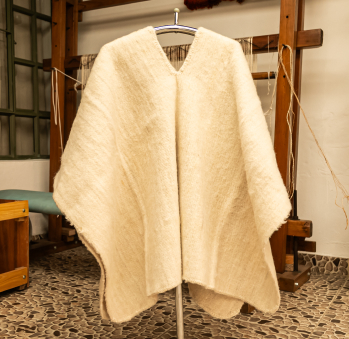
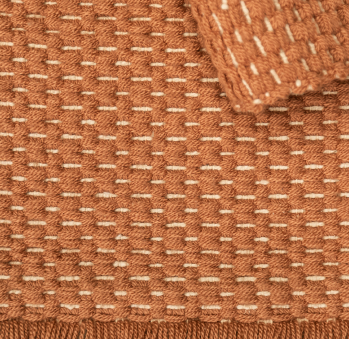






Artisans along the way
Artisans along the way
No puede copiar contenido de esta página

